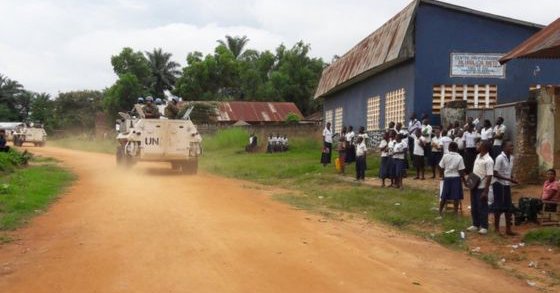
Violence in the Kasai region of Congo appears to be escalating significantly, as reports emerged over the weekend of the decapitation of 42 police officers tasked with fighting a regional militia known as Kamuina Nsapu.
The group is also suspected of having kidnapped an American man, a Swedish woman and four Congolese working with the United Nations to investigate recent clashes between the militia and government forces. The United Nations deployed Uruguayan and Tanzanian peacekeepers on a search-and-rescue mission two weeks ago, but they are complaining of obstructionism from the Congolese government.
The Kasai region is exceptionally poor and remote in a country that is largely without public infrastructure and teeters on the brink of lawlessness. No one from the vast region has ever led Congo – officially known as the Democratic Republic of the Congo, or the DRC – and it is the home province of the recently deceased opposition leader Étienne Tshisekedi. Across Congo, ethnic tension has combined with feelings of regional neglect to produce multiple large-scale conflicts over the past two decades. The recent fighting in Kasai has followed a familiar trajectory.
In early 2016, members of the regionally dominant Luba ethnic group named Jean-Pierre Mpandi as their “Kamuina Nsapu” or hereditary chieftain. Mpandi was seen as being politically at odds with the provincial governor, and animosity and suspicion quickly grew between them. Mpandi’s encampment was raided while he was away on the presumption that he was hoarding weapons. In turn, he called on his followers to take up arms against any and all representatives of the state. On Aug. 12, Mpandi was killed in a gun battle with security forces.
Since then, more than 400 people have died and 200,000 have been displaced in spiraling violence. The nonprofit International Crisis Group conducted interviews in the Kasai region and reported that “local observers said many young men and boys, some as young as 5, had been conscripted or joined. Its members wear red headbands or armbands, and like the Mai Mai groups operating in eastern DRC they undergo rituals and carry amulets that are believed to bring invulnerability. Some have guns, likely looted from the security forces. The government and several local observers claim some politicians support the insurgency.”
The disappearance of American Michael Sharp, Swedish Zaida Catalan and their local associates on March 12 was the first time U.N. workers had been kidnapped in Congo, according to Human Rights Watch. This suggests that the conflict in Kasai may be more generally aimed at outsiders, rather than having narrower ethnic motivations.
On Saturday, the U.N. mission in Congo, known as MONUSCO, expressed frustration with the government and “serious concern over restrictions placed on its freedom of movement by security forces in Kananga,” referring to one of the region’s major urban centers.
The Congolese military, which is poorly trained and barely paid, has carried out many atrocities in Kasai. Five videos have surfaced since January that show soldiers firing on unarmed civilians, some of them women and children. Seven soldiers have been arrested and charged with war crimes stemming from one of the videos, which shows them firing at 13 people and mutilating some of the bodies.
The police officers who were ambushed and beheaded by the militia on Friday were on their way to Kananga. According to provincial government officials, six who spoke the Luba language were spared.
(c) 2017, The Washington Post · Max Bearak

